Buddhist Temples in North Korea
A page inspired by the StrangeWalker .
While the temples located in the Diamond Mountains were almost all either destroyed or badly damaged during the Korean War, a few major temples in other places survived or have been restored and are of equal age and architectural importance. Additional photos of many of the temples listed below, borrowed from the Internet, can be seen collected here.
Anguk-sa 安國寺
Anguk-sa is a Korean Buddhist temple situated in Pyongsong, South Pyongan Province, North Korea. Built on the slopes of Mt. Pongrin, the temple dates to the Koryo dynasty, though all of the buildings date to later Joseon dynasty renovations. Anguk Temple was founded in 503 under Koguryo. It was later reconstructed in 1419, and again renovated in 1785 under king Chŏngjo. (Wikipedia)
Photos from 朝鮮古蹟圖報 Joseon gojeok dobo published 1932

Pohyŏn-sa / Bohyeon-sa 普賢寺
Pohyŏn-sa is a Korean Buddhist temple located in Hyangsan county in North Pyong'an Province, North Korea. It is located within the Myohyang Mountains. Founded under the Koryŏ dynasty at the start of the 11th century, the temple flourished as one of the greatest centers of Buddhism in the north of Korea, and became a renowned place of pilgrimage. Like most other temples in North Korea, the complex suffered extensive damage from US bombing during the Korean War. It has been rebuilt as a museum. Pohyon Temple was founded under the Koryŏ dynasty in 1024 and named for the Buddhist deity Samantabhadra (known as Pohyŏn Posal in Korean). (Wikipedia)
Photos from 朝鮮古蹟圖 報 Joseon gojeok dobo published 1932
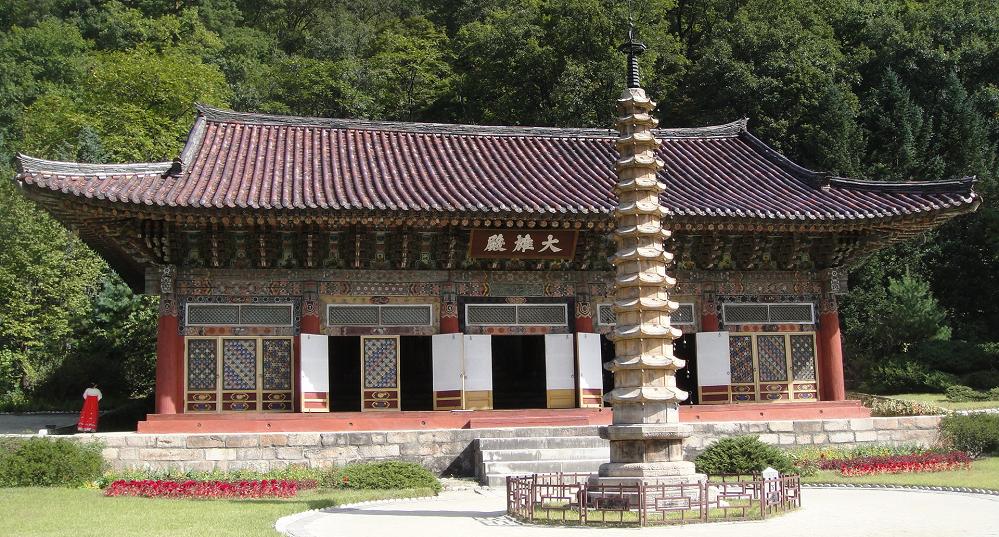
This temple served as location for the 1988 Italian - North Korean action movie co-production Ten Zan - The Ultimate Mission.
You can watch the whole film here on youtube. All scenes from 1:06:17 to 1:12:00 were shot at Bohyeon Temple.
Ch'ŏnju-sa / Cheonju-sa 天柱寺
Ch'ŏnju-sa is a Korean Buddhist temple located on the southern slope of Yaksan mountain, in Yŏngbyŏn, North Pyŏngan province, North Korea. Founded 1684 during the mid-Joseon dynasty the temple today retains its main prayer hall, known as Pogwang Hall; the Ch'ŏnju Pavilion, once known as one of the six most scenic spots in Yongbyon; and several lesser outbuildings, including storage rooms, and dormitories. (Wikipedia)
Photos from 朝鮮古蹟圖報 Joseon gojeok dobo published 1932
 Bogwang-jeon普光殿
Bogwang-jeon普光殿Simwŏn-sa / Simwon-sa 心源寺
Simwŏn-sa is a Korean Buddhist temple located in Yŏntan-gun, North Hwanghae Province, North Korea. The temple contains one of the oldest wooden buildings in North Korea, as well as a famous peach tree and stupas from the late Koryo dynasty. (Wikipedia)
Photos from 朝鮮古 蹟圖報 Joseon gojeok dobo published 1932
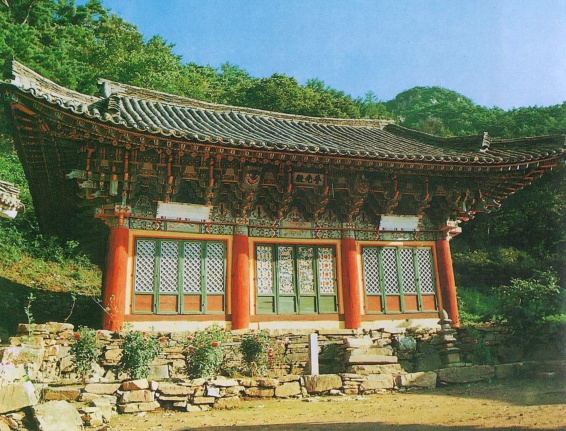
Sŏngbul-sa / Seongbul-sa 成佛寺
Sŏngbul-sa is a Korean Buddhist temple in Sariwŏn, North Hwanghae Province, North Korea. It is located within the castle on Mt. Jŏngbang and was founded in 898 AD. The temple consists of six buildings, some of which are among the oldest wooden buildings in North Korea. (Wikipedia)
Photos from 朝 鮮古蹟圖報 Joseon gojeok dobo published 1932

Ryonghŭng-sa / Ryongheung-sa 龍興寺
Ryonghŭng-sa is a Korean Buddhist temple in Ponghung-ri, Yŏnggwang-gun, South Hamgyŏng Province, North Korea. Located on the slopes of Mt. Paegun, the temple was founded in 1048 under the Koryo dynasty and later renovated in 1794 under Joseon. (Wikipedia)
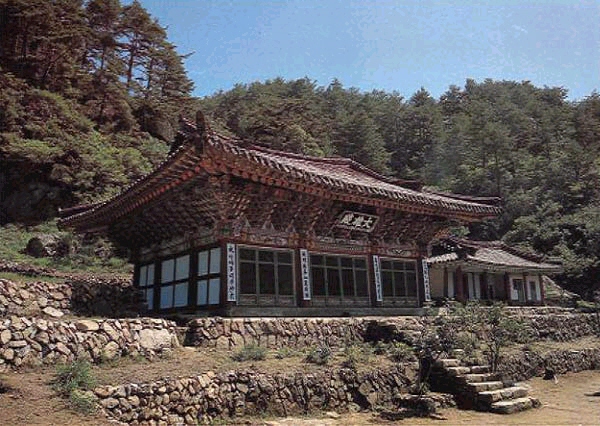
Kaesim-sa / Gaesim-sa 開心寺
Kaesim-sa is a Korean Buddhist temple located in the famous Chilbosan Mountains, North Hamgyong Province, North Korea. Founded in 826 under the Palhae kingdom and restored in 1377 by the Koryo dynasty, the temple long served as a religious retreat. The temple serves as a repository for many important buddhist sculptures, paintings, and scriptures. The temple grounds also hold a bronze bell dating from 1764 and a famed 200 year old chestnut tree. It is one of National Treasures of North Korea. (Wikipedia)

Kwanŭm-sa / Gwaneum-sa 觀音寺
Kwanŭm-sa is a Korean Buddhist temple located within Taehung Castle on Mt. Chonma near Kaesong, North Korea. The site is one of the National Treasures of North Korea. Named after Guanyin, the buddhist bodhisattva of compassion, this small temple is located in the beautiful valley between Mts. Chonma and Songgo. The temple was founded in 970 when a monk deposited two marble statues of the goddess in a cave behind the temple's current location. The temple itself was constructed in 1393 under the Koryo Dynasty, and later renovated in 1646 under the Joseon. The site contains many ancient relics, including a seven-story pagoda from the Koryo dynasty and the ancient Guanyin statues in Kwanum Cave. (Wikipedia)
Photos from 朝 鮮古蹟圖報 Joseon gojeok dobo published 1932
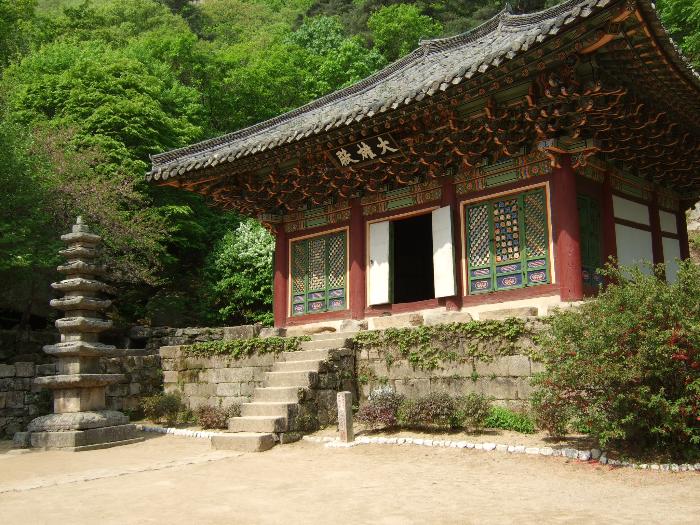
Yŏngmyŏng-sa / Yeongmyeong-sa 永明寺
Yŏngmyŏng Temple was a Korean Buddhist temple located at the foot of Moranbong hill in Pyongyang, North Korea. Prior to its destruction in the Korean War, it was the largest and most important center of Buddhist worship in that city. Though it is unknown when the temple was founded, popular tales date it to the end of the Goguryeo kingdom. The temple was completely rebuilt under the Joseon dynasty. Under the Japanese occupation of Korea, the temple became a major tourist site in Pyongyang it was renowned for its beautiful riverside location and many cherry trees. In the 1920s it again underwent an extensive restoration funded by the Japanese government, who also officially changed its name to its Japanese pronunciation, "Eimei-ji". The historic temple was destroyed during the U.S. carpet bombings of Pyongyang during the Korean War. The only building of the temple now standing is Pubyŏk Pavilion, a scenic lookout which was reconstructed after the war and was known for its beautiful views of the Taedong River; its stone pagoda and octagonal shrine also survived the bombings, and all three are registered as National Treasures of North Korea. (Wikipedia)

Other North Korean temples
Seoun-sa 棲雲寺
In Yeongpyeon, North Pyongan province
Photos from 朝 鮮古蹟圖報 Joseon gojeok dobo published 1932
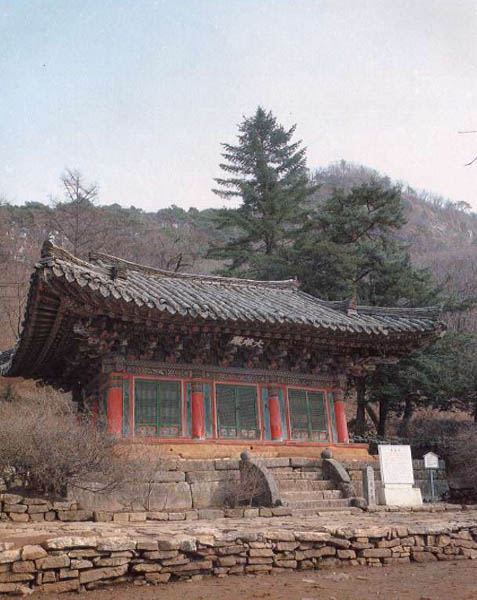
Anhwa-sa 安和寺
In Koryo-dong, Kaesong, North Hwanghae province
(Wikipedia)
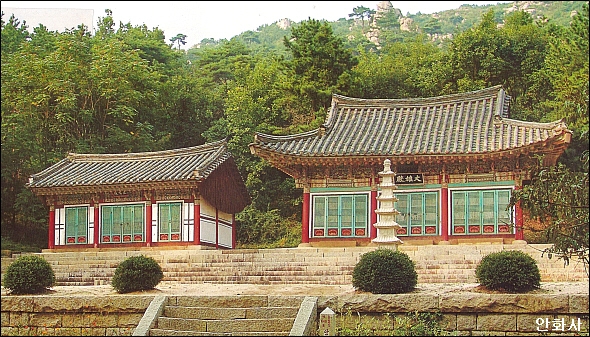
Ryangcheon-sa 梁泉寺
In Rakchol-li, Kowon County, South Hamgyong Province
(Wikipedia)
Photos from 朝 鮮古蹟圖報 Joseon gojeok dobo published 1932
(The upper image on the first page represents Yongbi-ru in Seok-wang-sa)
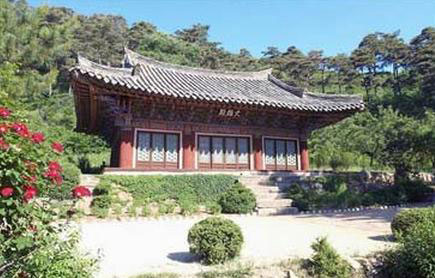
Click here for a page with additional photos of many of the above temples found drifting unseen and unloved on the Internet.